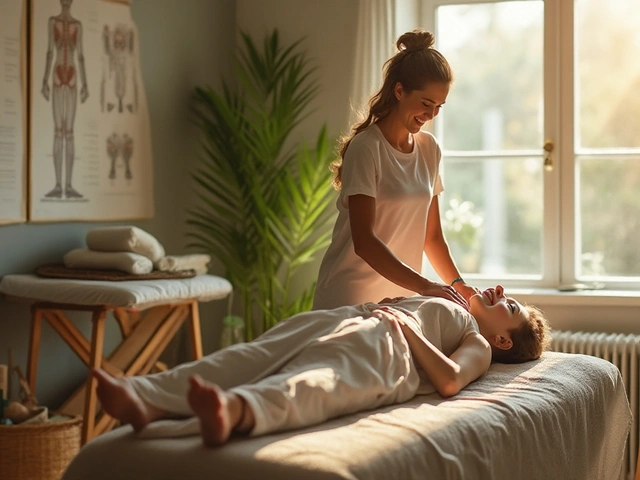Balinese Massage for Dogs: A Gentle, Healing Touch
A few minutes of the right massage can lower a dog’s heart rate and ease anxiety. Balinese massage uses flowing strokes, light kneading, and gentle pressure to relax muscles and calm the nervous system. This page explains what it is, why it helps dogs, and how to try a short, safe routine at home.
What Balinese massage is
Originating in Indonesia, Balinese massage blends long, gliding strokes with mild acupressure, skin rolling and gentle kneading. Therapists often add warm carrier oil and subtle aromas for extra relaxation. For dogs, the method is adapted — shorter sessions, lighter pressure, and no strong essential oils. The main benefits are improved circulation, reduced muscle tension, and lower stress before travel, groomers, or bedtime.
How to do it safely and a simple routine
Always check with your vet if your dog has recent injuries, bleeding problems, cancer, or open wounds. Start by letting your dog sniff your hands and watch body language for comfort. Use a safe carrier oil like fractionated coconut oil if you want slip; avoid strong essential oils without veterinary advice. Keep sessions short: three to seven minutes for small dogs and up to fifteen for larger breeds. Use smooth, long strokes along the back to warm muscles, then gentle kneading on shoulders and thighs. Try short skin rolling on the flank and very light acupressure holds near the chest and base of the skull, no more than five seconds each. Finish with calming strokes along the belly and sides while speaking softly and offering praise.
Stop if your dog flinches, growls, pulls away, pants heavily, or shows heat and swelling around a joint. A few minutes after walks or before bedtime works best to build a routine, rewarded with treats and calm praise. With steady, gentle practice, Balinese-style massage can help dogs move easier, sleep better, and feel less anxious.
Common mistakes are pressing too hard, rushing, or using unapproved oils. If you press and the dog tenses, ease up and try gentler motion. Rushing makes dogs distrustful; keep steady rhythm and short sessions.
For senior dogs or those with arthritis, focus on gentle strokes and avoid deep pressure near painful joints. Puppies respond well to brief massage to build trust, but their bones and growth plates need care—avoid heavy kneading.
You may notice small changes in the first week: calmer walks, softer body language, and easier rising after naps. Lasting mobility gains often take four to eight weeks of regular short sessions. Track progress with simple notes: time, areas worked, and any mood or movement improvements.
Combine massage with gentle stretching, proper warming before exercise, and vet-approved supplements or diet changes for best results. If pain persists or worsens, stop massage and seek veterinary assessment.
Start small, be consistent, and pay attention. Many dog owners find five minutes daily makes a real difference. If you feel unsure, take a workshop or ask a canine massage professional for a quick demo today.

The Science Behind the Relaxing Balinese Massage.
Hey there, wellness enthusiasts! Have you ever wondered why a Balinese massage feels so incredibly soothing and rejuvenating? It's more than just a delight for your senses; there's actually a solid scientific basis behind it. From triggering endorphin release to improving blood circulation, I'll take you through the fascinating science that makes this beautiful wellness ritual so beneficial. Trust me, the next time you indulge in a Balinese massage, you're going to appreciate it on a whole different level!

Balinese Massage: A Natural Approach to Wellness.
Hey there! Today, I'm going to reveal the secrets of Balinese Massage which is a sublime way of natural wellness. Isn't it alluring how this traditional healing practice can rejuvenate our body and soul? In this post, I will share in-depth details on how Balinese massage adopts a holistic approach to wellness, and how you can also integrate it into your wellness routine. Stay tuned for some enlightening wellness-boosting insights!

Fascia Stretching: Unlock Your Body's Full Potential
Apr, 18 2025



